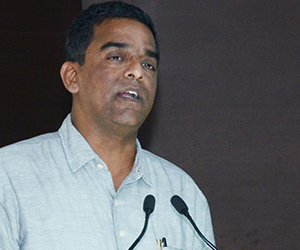For years, the India-US defence partnership has been more about symbolism than substance. While the two countries conduct a spate of joint exercises across the three services, the previous United Progressive Alliance (UPA) government and especially its risk-averse defence minister AK Antony had prevented achieving full potential of their possible joint ventures. Under Antony’s watch, the Indian Ministry of Defence (MoD) was careful not to appear sliding too close to Washington.
However, the Narendra Modi led NDA government is well on its way to shedding the UPA’s reluctance in engaging with the Pentagon more substantively. Defence Minister Manohar Parrikar and his US counterpart Ashton Carter have already met thrice in the past one year. Parrikar’s recent US visit saw many firsts in Indo-US defence engagement. Parrikar began his visit from Hawaii, headquarter of the US Pacific Command, thus becoming the first Indian defence minister to do so. The Pacific Command, largest of the US commands is the fulcrum of America’s involvement in the Indo-Asia-Pacific, a new term being increasingly used to describe the vast stretch of area from Hawaii to India, covering most of Asia. He was also hosted on a US aircraft carrier, again a first for any Indian defence minister.
Later, during the intensive interactions in Washington DC, Parrikar and Carter, got down to serious business of taking the Indo-US partnership to the next level. The Indian defence minister began by doing some plain talking about what is holding back this partnership. “India has done enough to simplify its defence procurement and other norms. It is time for US Govt and Industry to reciprocate. It is easy to blame Indian bureaucracy but in some cases, US bureaucracy is much worse,” he said during one of the interactions with the US defence industry stalwarts in presence of Pentagon officials. He was quick to add that US can add a lot of value to Indian industry and laid down the path ahead, especially towards indigenous manufacturing.
Parrikar went on to add that enough was done to facilitate ease of doing business in India. He urged US industry to come forward in collaborating with Indian companies. He stressed upon the fact that Indian industry today is capable of maintaining highest standards and could easily become an important part of the global supply chain of American defence companies.
According to those who were privy to the discussions at the highest levels in Washington, the US defence establishment is now willing to take a re-look its laws that will help India get the best defence technology. The US is now in fact pushing co-production ventures with India too. In Ashton Carter, India perhaps has the friendliest US Secretary of Defence. As Deputy Secretary of Defence from October 2011 to December 2013, Carter personally pushed defence ties between the two countries. Indeed, the 2012 Defence Trade and Technology Initiative (DTTI) was his brainchild. DTTI is now up and running again after lying dormant for the past couple of years.
During the DTTI Group’s fourth meeting at the Pentagon recently, the two sides committed to executing the project plans for two government-to-government pathfinder projects: the Mobile Electric Hybrid Power Sources (MEHPS) and the Next Generation Protective Ensemble (NGPE). Two other projects are nearing finalisation: terms of reference for the Jet Engine Technology Joint Working Group are ready, and the second meeting of the Joint Working Group on Aircraft Carrier Technology Cooperation (JWGACTC) will be held in February 2016.
The US side is pushing India to sign the three foundational agreements-- Communications Inter-Operability and Security Memorandum of Agreement (CISMOA), LSA (Logistics Support Agreement), and the Basic Exchange and Cooperation Agreement for Geo-Spatial Cooperation (BECA)—considered essential by Washington to allow transfer of high-end technology to India. The US argument is that these agreements ease the conduct of joint military exercises besides expanding their scope and ambition.
Apparently, Parrikar has conveyed to US that India has an open mind to discuss the contours of these agreements, signalling a shift in the MoD’s thinking. The traditional reluctance so far to was that any such pact goes against India's posture of military neutrality. In fact, on UPA Defence Minister AK Antony’s watch, the MoD was even reluctant to allow a third country to participate in the India-US Exercise Malabar. Under the NDA regime however, Japan has been allowed to join the exercise and the arrangement is now formalised for a trilateral exercise to be held annually even at the cost of earning Beijing’s wrath. Modi and Parrikar, it appears have decided not be constrained by the traditional thinking in South Block and have given a go ahead for Indian negotiators to discuss the foundational agreements.
Despite the incremental progress, critics would want to see more substantive progress between India and the US. The building blocks have been assembled; both sides need to speedily build the superstructure in coming months before the change of administration in Washington DC in the next one year.
Published Date: 21st December 2015, Image Source: http://www.defensenews.com
(Disclaimer: The views and opinions expressed in this article are those of the author and do not necessarily reflect the official policy or position of the Vivekananda International Foundation)









Post new comment